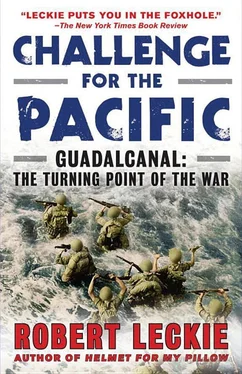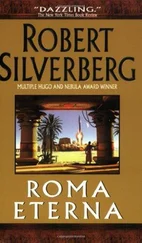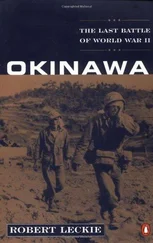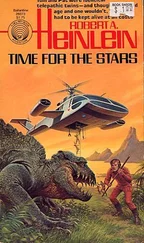Lee’s six-ship column turned north, and then east to put Savo on the right and enter Iron Bottom Bay.
The bay was calm. Its waters gleamed faintly in the light of a first-quarter moon setting behind the mountains of Cape Esperance. Lee’s deep-water sailors could sniff a sweet land breeze redolent of honeysuckle. They could see very little, only the heights of land looming to either side. Needles on the magnetic compasses fluttered violently as they passed, in grim reminder of their purpose, over the hulks of the sunken vessels that gave the bay its name.
Ching Lee tried to raise Guadalcanal by radio. Back came the reply: “We do not recognize you.” 15
The admiral thought of his friend from China, and countered:
“Cactus, this is Lee. Tell your big boss Ching Lee is here and wants the latest information.” 16
No answer. But then, out of nowhere, but over the Talk Between Ships: “There go two big ones, but I don’t know whose they are.” 17
Lee stiffened. The chatter was from a trio of torpedo boats to his left. He spoke quickly to Guadalcanal again: “Refer your big boss about Ching Lee; Chinese, catchee? Call off your boys!” 18And then, more sharply to the torpedo boats themselves: “This is Ching Chong China Lee. All PTs retire.” 19
Over the Talk Between Ships a skeptical voice murmured, “It’s a phony. Let’s slip the bum a pickle.” 20
“I said this is Ching Chong China Lee,” the admiral roared. “Get the hell out of the way! I’m coming through!” 21
Startled, the tiny craft scuttled aside and the battleships went through.
Lee led them west again toward Savo, straight toward Sendai and a destroyer coming east as Kondo’s vanguard. Shortly after eleven o’clock, Washington and South Dakota ’s 16-inch guns boomed, and the battle was joined.
As always it began badly for the Americans. Japanese crews quickly launched shoals of shark-shaped steel fish. Preston, Benham , and Walke took the full brunt of them, of enemy gunfire as well, and were given their death blows. South Dakota was caught in enemy searchlights and an entire Japanese bombardment force opened up on her. She shuddered under their blows. She fought back, shooting out the searchlights—but Japanese shells tore into her superstructure, sweeping away her search radars and all but one gunnery radar.
But then mighty Washington found Kirishima .
Again and again her 16-inch guns flashed and roared, again and again her five-inchers fired starshell to illuminate the enemy giant or to rip her decks. Kirishima was staggered repeatedly. Nine of those terrible 2700-pound armor-piercers tore into her vitals. Topside she was a mass of flames, she was drifting helplessly, she was done. Kirishima would join her sister-queen, Hiei , on the bottom of the sea. And like Hiei ’s ladies-in-waiting, all of Kirishima ’s escort, excepting sinking Ayanami , were turning to flee. South Dakota and Washington had trained their terrible guns against Atago and Takao , who were caught in friendly searchlights, and these battered cruisers led the flight to the north.
Washington gave pursuit alone, for South Dakota and Gwin had withdrawn, but she found nothing—not even the Japanese transports whom Admiral Lee was also hungrily hunting—and so Ching Chong China Lee swung south of Guadalcanal to sail back to Nouméa in triumph.
Behind him, Admiral Raizo Tanaka began shepherding his four remaining transports for a last-ditch run into Guadalcanal. He asked Admiral Mikawa for permission to beach the troopships, but Mikawa replied: “Negative.” He appealed to the retiring Admiral Kondo aboard Atago , and received the answer: “Run aground and unload troops!” 22
Full steam ahead, with only Hayashio to guard them, the four transports raced toward Tassafaronga. Before the sun was up they had reached it and driven themselves hard aground almost line abreast. Tanaka the Tenacious turned to collect his scattered destroyers—many of them low in the water with rescued troops—and lead them sadly north.
And then came the dawn of November 15.
Men of the First Marine Division who had passed another of so many apprehensive and thundering nights looked west once more, and saw, at Tassafaronga, the familiar sight of enemy ships aground. But these ships were burning. American aircraft were already bombing them from the air, an American destroyer, Meade , was shelling them from the sea, and American long-range artillery was battering them from the beaches.
Air, land, and sea, it was symbolic of this savage struggle to wrest this poisonous green hag of an island from the hands of the Japanese; and now it was ending that way, for the crucial, three-day naval battle of Guadalcanal was over. The Americans had won. They had lost two cruisers and five destroyers, but they had sunk two Japanese battleships, one cruiser and three destroyers, as well as eleven precious troop transports with almost all of a 3000-man Naval Landing Force and half of the 38th Division.
Up on the ridges of Guadalcanal the Marines looked down at the beached and burning transports, and they smiled. It was full of savage satisfaction, that smile, nourished by a merciless and gloating glee. One hundred long days ago these aching, old-young men had begun this battle, and at any moment, upon any instantaneous hour, the black and bloody defeat symbolized by those burning transports could have been theirs.
But they had held, these Marines, the Army had come in, the Navy had fought back, and now, on the morning of November 15, Guadalcanal was truly saved.
ON THE morning of November 15, Major General Alexander Archer Vandegrift also knew that the Japanese were beaten, and he sent the following dispatch to Admiral Halsey:
“We believe the enemy has suffered a crushing defeat. We thank Lee for his sturdy effort of last night. We thank Kinkaid for his intervention of yesterday. Our own air has been grand in its relentless pounding of the foe. Those efforts we appreciate, but our greatest homage goes to Scott, Callaghan and their men who with magnificent courage against seemingly hopeless odds drove back the first hostile stroke and made success possible. To them the men of Cactus lift their battered helmets in deepest admiration.” 1
Halsey agreed with Vandegrift’s jubilant estimate. Only minutes before he had showed his staff reports of destruction of the enemy transports, and told them: “We’ve got the bastards licked!” 2
But the enemy thought otherwise.
Immediately after proclaiming a smashing Japanese victory in the naval battle of Guadalcanal, Imperial General Headquarters set about the actual destruction of those Americans whom they had just annihilated on paper. This time, the fifth, there was to be intelligent respect for enemy air power.
Before any reinforcements were sent to Guadalcanal, an airfield was to be constructed in the Shortlands, the one recently completed in New Georgia was to be expanded, and a third base sought farther down the Solomons ladder.
This plan, however, was quickly wrecked by the Americans.
Cactus Air Force, at a top strength of 150 planes and still expanding by early December, bombed the Japanese base at Munda on New Georgia into twisted futility, showering a similar interdiction upon Japanese attempts to construct supporting bases. Far to the north, American submarines, gnawing for months on Japanese supply lines, had begun to bite through. Finally, Australian and American soldiers had pressed Japanese forces on New Guinea back toward Buna-Gona, where they were to suffer ultimate defeat and General MacArthur was to gain the springboard from which he would drive up the New Guinea coast.
Читать дальше












